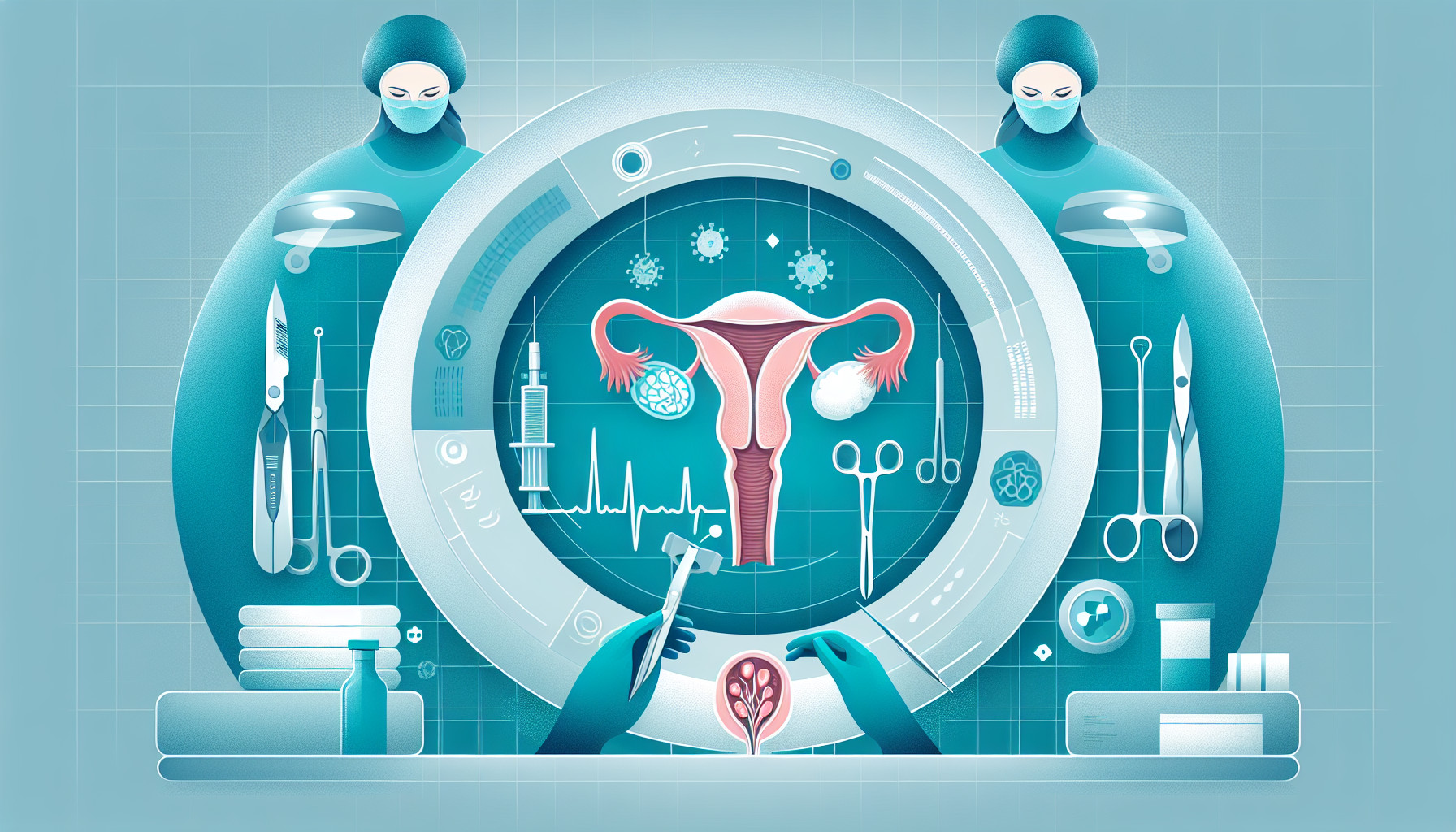Our Summary
This research paper discusses a rare case of a large ovarian cyst found in a pregnant woman. Large cystic masses, like the one found in this case, are not common during pregnancy. Corpus luteum cysts and theca lutein cysts are usually the most common types found. They are typically found during routine ultrasound scans during pregnancy. How they are handled depends on their size and the symptoms they cause.
In this specific case, a 24-year-old woman was found to have a large ovarian cyst in her second trimester of pregnancy. The cyst was discovered during a physical examination and confirmed by an ultrasound, which showed a cystic mass of 11.9 cm × 11.7 cm X 15.9 cm. After further investigation, it was decided to surgically remove the cyst. The removed mass was later confirmed to be mucinous cystadenoma, a type of benign tumor that forms in the ovary.
Ovarian masses can cause complications like twisting of the ovary, rupture, infection, or issues with the positioning of the fetus. If the mass is larger than 5 cm or causing severe symptoms, surgery can be performed to remove it. Surgery can be planned during the second trimester if there are no urgent symptoms.
In conclusion, while large ovarian masses are rare during pregnancy, it’s important to evaluate them properly to decide the best course of action.
FAQs
- What are the most common types of ovarian cysts found during pregnancy?
- How are large ovarian cysts during pregnancy typically handled?
- Can surgery be performed to remove an ovarian cyst during pregnancy?
Doctor’s Tip
A doctor might advise a patient undergoing ovarian cyst removal to ensure they follow all pre-operative instructions given by their healthcare provider, such as fasting before surgery and avoiding certain medications. They may also recommend taking time off work to rest and recover after the procedure, as well as following up with their healthcare provider for any post-operative care or concerns. Additionally, they may suggest gentle exercises and movement to aid in the healing process and prevent complications.
Suitable For
Patients who are typically recommended ovarian cyst removal include those with:
- Large cystic masses (larger than 5 cm)
- Symptoms such as severe pain, bloating, or pressure
- Complications such as twisting of the ovary, rupture, or infection
- Suspicion of malignancy (although most ovarian cysts are benign, further investigation may be needed)
- Issues with the positioning of the fetus or potential impact on the pregnancy
Ultimately, the decision to remove an ovarian cyst during pregnancy will depend on the size of the cyst, the symptoms it is causing, and the potential risks to both the mother and the fetus. It is important to weigh the risks and benefits of surgery carefully and consult with a healthcare provider to determine the best course of action.
Timeline
Before ovarian cyst removal:
- A patient may experience symptoms such as abdominal pain, bloating, nausea, vomiting, or changes in menstrual cycle.
- The cyst may be discovered during a routine physical examination or ultrasound scan.
- Further tests may be conducted to determine the size and type of the cyst.
- If the cyst is causing severe symptoms or complications, surgery may be recommended.
After ovarian cyst removal:
- The patient undergoes surgery to remove the cyst.
- The removed cyst is sent for further analysis to determine if it is benign or malignant.
- The patient may experience some discomfort or pain post-surgery, which can be managed with pain medication.
- Follow-up appointments are scheduled to monitor the patient’s recovery and ensure there are no complications.
- The patient may need to take it easy and avoid strenuous activities for a period of time post-surgery.
- Once the patient has fully recovered, they can resume normal activities and should have regular check-ups to monitor for any recurrence of cysts.
What to Ask Your Doctor
Some questions a patient should ask their doctor about ovarian cyst removal include:
- What type of ovarian cyst do I have and what are the potential risks associated with it?
- What are the symptoms or complications that may indicate the need for surgical removal of the cyst?
- What is the size of the cyst and how will it be monitored during my pregnancy?
- What are the potential risks and benefits of surgical removal of the cyst during pregnancy?
- How will the surgery be performed and what is the recovery process like?
- Will the surgery affect my pregnancy or the health of the baby?
- Are there any alternative treatment options available for ovarian cyst removal?
- What is the long-term outlook for my ovarian health after the cyst removal surgery?
- How often will I need follow-up appointments or monitoring after the surgery?
- Are there any lifestyle changes or precautions I should take to prevent future ovarian cysts?
Reference
Authors: Acharya K, Poudel D, Dahal S, Kuikel S, Adhikari A. Journal: Ann Med Surg (Lond). 2022 Sep 27;82:104765. doi: 10.1016/j.amsu.2022.104765. eCollection 2022 Oct. PMID: 36268389
